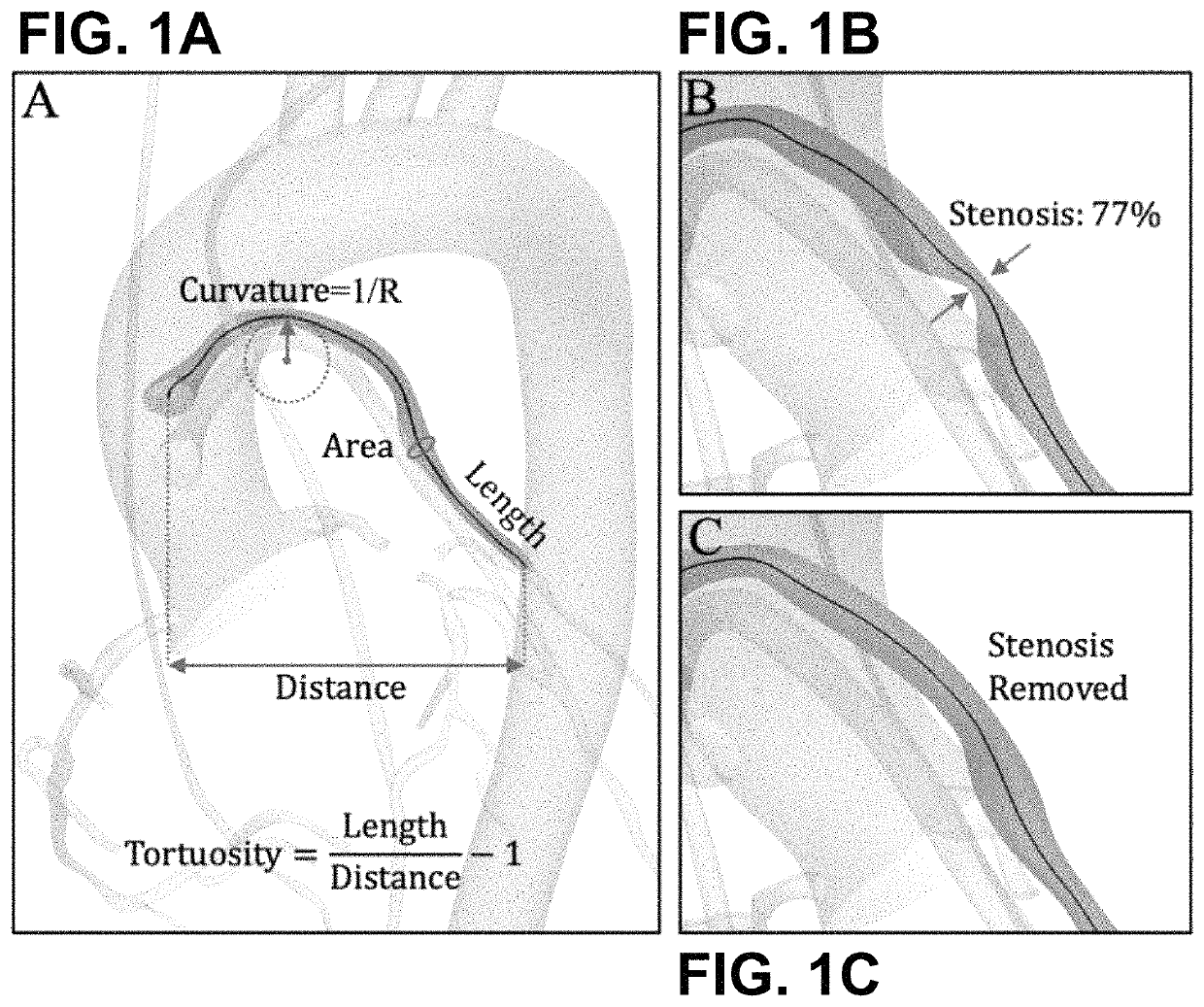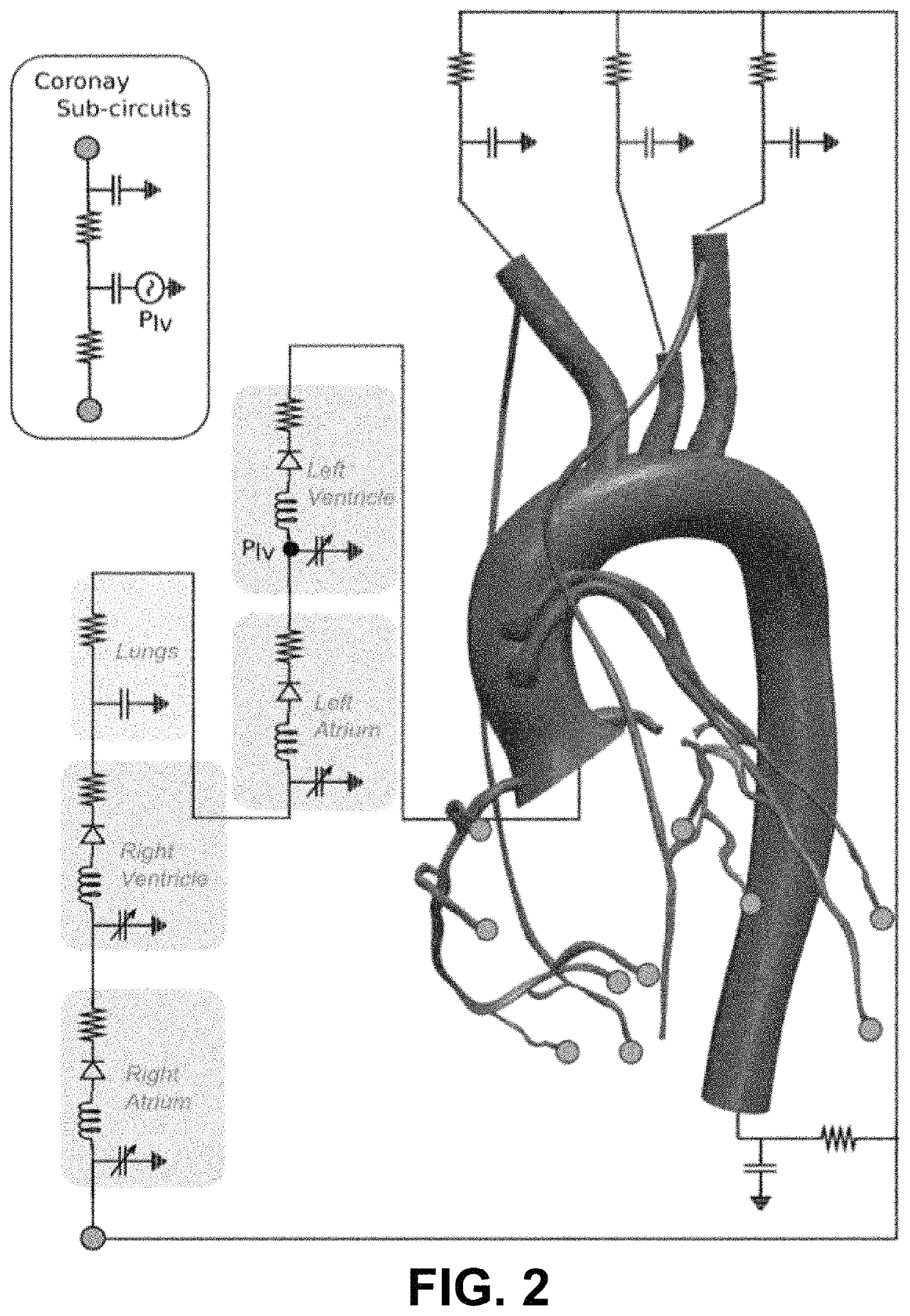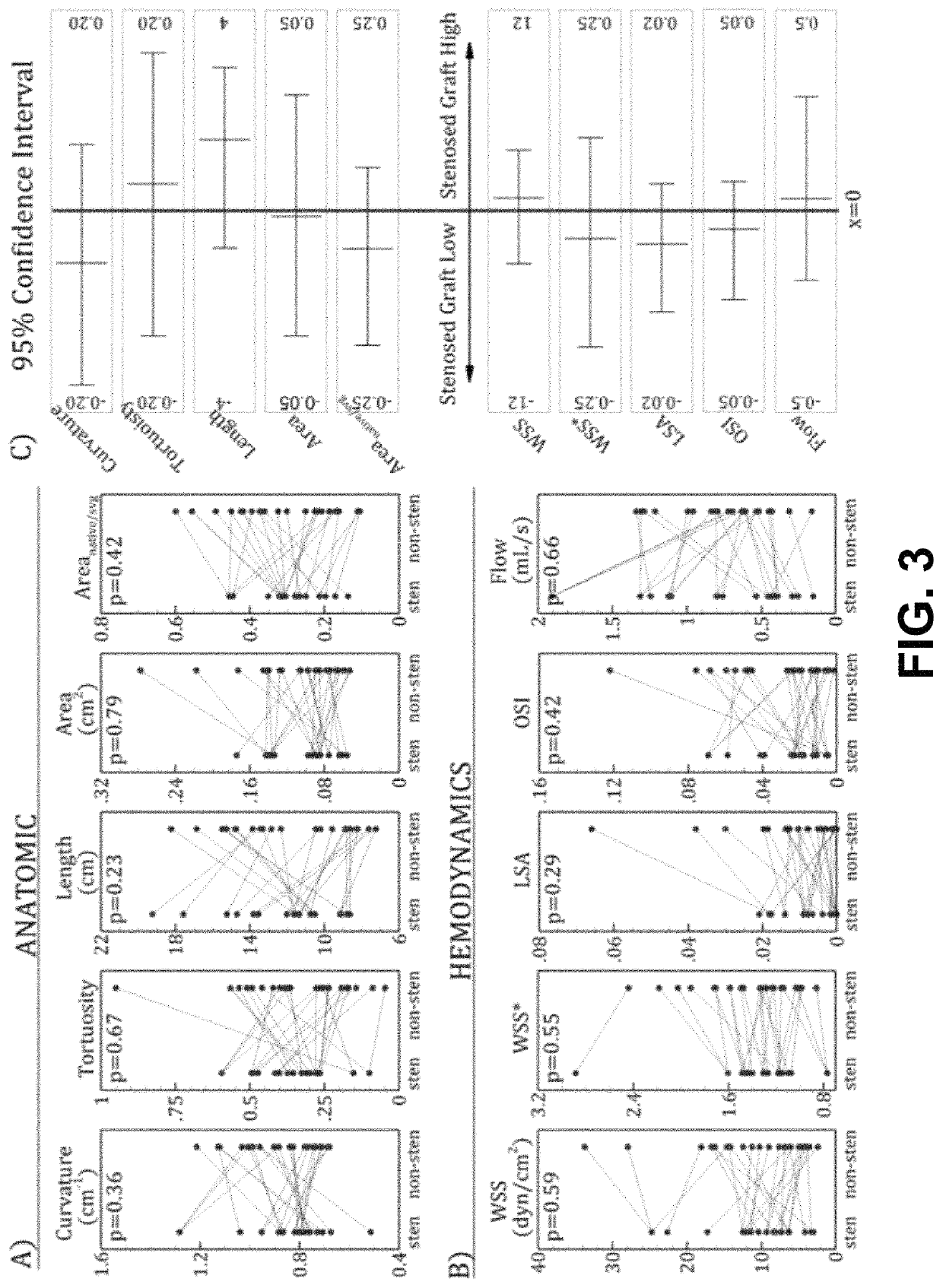Hemodynamic and morphological predictors of vascular graft failure
a vascular graft and predictor technology, applied in the field of morphological predictors of vascular graft failure, can solve the problems of high failure rate, increased risk of morbidity and mortality, and further interventions with potentially higher risk of morbidity and mortality, and achieves stimuli that are difficult to obtain non-invasively through current imaging modalities
- Summary
- Abstract
- Description
- Claims
- Application Information
AI Technical Summary
Problems solved by technology
Method used
Image
Examples
Embodiment Construction
[0026]This invention provides a method and system using computational fluid dynamics (CFD)-derived hemodynamic and CTA-based anatomic predictors of SVG failure. While the definition of failure is not universal, it is either characterized as complete occlusion of the SVG or as presence of a clinically significant stenosis. We have used the latter definition for the purposes of this invention.
[0027]For the purposes of this invention, a retrospective study was designed to review a cohort of N=650 patients. From this population, patients were selected who had at least one moderate-to-severely stenosed and one non-stenosed SVG, so that patients served as their own control. Exclusion criteria included: i) patients with only LIMA / RIMA grafts, ii) SVGs not visualized on CTA due to complete or partial occlusion, iii) SVGs that appeared aneurysmal and patulent. Also excluded were patients whose CTA showed significant motion and metal artifacts. After aforementioned exclusion criteria, a total...
PUM
 Login to View More
Login to View More Abstract
Description
Claims
Application Information
 Login to View More
Login to View More - R&D
- Intellectual Property
- Life Sciences
- Materials
- Tech Scout
- Unparalleled Data Quality
- Higher Quality Content
- 60% Fewer Hallucinations
Browse by: Latest US Patents, China's latest patents, Technical Efficacy Thesaurus, Application Domain, Technology Topic, Popular Technical Reports.
© 2025 PatSnap. All rights reserved.Legal|Privacy policy|Modern Slavery Act Transparency Statement|Sitemap|About US| Contact US: help@patsnap.com



